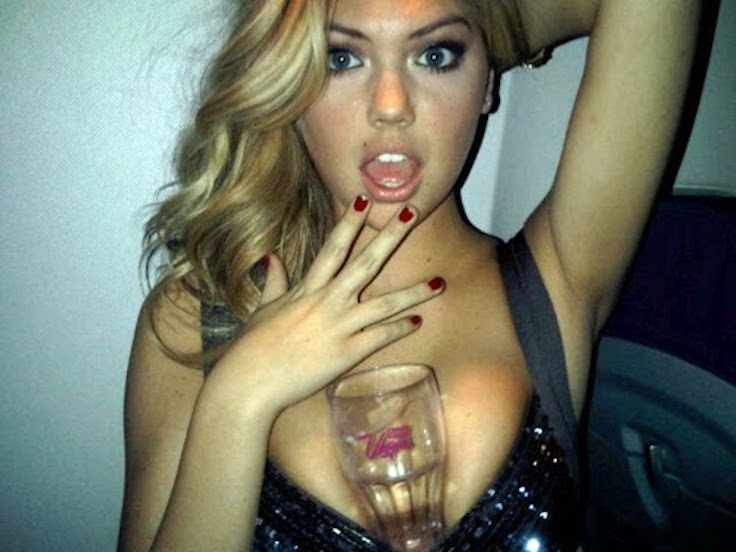If you like to drink and like to read, you're in luck. Books about alcohol are a dime a dozen, and almost as enjoyable to skim as their subjects are to sip. Whether you're interested in how it's made, want to learn how to mix it, or simply want to revel in the exploits of history's great tipplers, there's something out there for you.
In other words, it's exceptionally hard to find a boring book about alcohol. But fear not, teetotalers and killjoys yearning for the literary equivalent of last call. Mallory O'Meara has got you covered.
Girly Drinks: A World History of Women and Alcohol should be interesting. After all, it's about girls and booze, possibly the most interesting combination of all time. But through some kind of reverse alchemy, O'Meara took 25,000 years' worth of information on women and alcohol and made it boring. The result is a book that’s harder to get through than a cement mixer.
O'Meara begins by asking, "Who decided that drinking was a gendered act?" Those of us who didn’t attend a certain kind of liberal arts college might put it differently: Why are certain drinks deemed "girly," and why is that a bad thing? It's a reasonable question. After all, even the most macho drinker can enjoy a frozen margarita on the beach.
It would be an interesting subject to study. Unfortunately, O'Meara quickly ditches this line of inquiry with the declaration that "all drinks are girly drinks." Thus is the book's titular theme unceremoniously abandoned in favor of a broader examination of the relationship between women and alcohol across civilizations.
O'Meara's argument is twofold. First, that women have been central to alcohol production from the moment of the first fermentation. And second, that patriarchal societies use rules surrounding who can make and drink alcohol to control women.
The first point is well taken, and leads to some of the best parts of the book. We learn about women like Rachel Barrie, the Glenmorangie distiller who popularized aging Scotch in wine barrels and sherry casks. Then there's Jill Vaughn, the Anheuser-Busch brewmaster who created a variety of drinks including Michelob Ultra, Bud Light Platinum, and Shock Top. I was quite grateful to learn about these female visionaries, who I can thank for about 35 percent of the drinks I've had in my life.
But these interesting stories merely serve as a launch pad for O'Meara's criticisms of male-dominated society. She tells us over and over that men have always conspired to keep women out of the brewery and barroom. But she never explains why, or pauses to reflect on the fact that nearly every society in the history of mankind has taken a gendered approach to drinking. Nor does O'Meara seem aware of a contradiction between her two arguments. Girly Drinks asks us to accept simultaneously that women have always been at the center and periphery of drinking culture.
Of course, O'Meara doesn’t need to deal with these contradictions or nuances. She can simply paper over them with charges of patriarchal oppression. Indeed, she even finds a way to blame men for Prohibition, famously ushered in by the Women's Christian Temperance Union. "Although the idea of a women’s political movement sounds pretty cool," O'Meara writes, "the literature they wrote and distributed was in support of a patriarchal society."
Oddly, O'Meara is less critical about patriarchal influence when she praises women for popularizing the beer can. Women didn't invent the beer can, nor did they petition to have them. Instead, they responded in the early 1950s to advertisements from beer makers who "wanted women to think that if they brought home a pack of their beer, they too could have a smiling husband."
Sure sounds like internalized patriarchy to me! And yet, O'Meara spares the rod for the legions of Betty Drapers whose desire for domestic bliss and husbandly approval got America popping tabs.
Nowhere is O'Meara's feminist critique more inconsistently applied than in her discussions of actual girly drinks, which she returns to even after dismissing the idea on page two. She bemoans the fact that women are expected to order "cloyingly sweet, fizzy drinks," but later shows that all the landmark girly drinks she names... were invented by women.
The appletini? Popularized by a female bartender in New York in the late 1990s. The cosmopolitan? The ladies of Sex and the City normalized female drinking with their favorite cocktail. The rosé boom? Driven entirely by #GirlBosses who came of age in the post-cosmo world.
In other words, it seems that girly drinks were created, popularized, and are most frequently ordered by women. Could it be, perhaps, that girls really just prefer girly drinks?
Certainly not. Clearly, even today, female drinking preferences are influenced by the male gaze. O'Meara complains that "the whiskey-drinking woman" has become an archetype of cool "because she's drinking a man drink, not a girly drink." She laments that "many women bought into this idea" and implores female drinkers of the world to not "let the patriarchy influence your drink choices."
Incidentally, O'Meara's author photo on the dust jacket shows her posing with a glass of whiskey, and her bio notes that "bourbon is her drink of choice." Surely, she's an exception to the rule.
Girly Drinks is a scattered, unpleasant rendering of what should be an enjoyable topic. But the world being what it is, it will undoubtedly work its way up the charts. At the time of this writing, it is the number one book on Amazon in the "Alcoholism Recovery" category. Perhaps other readers found the book so disagreeable they swore off its subject for good.
Girly Drinks: A World History of Women and Alcohol
by Mallory O'Meara
Hanover Square Press, 384 pp., $27.99
